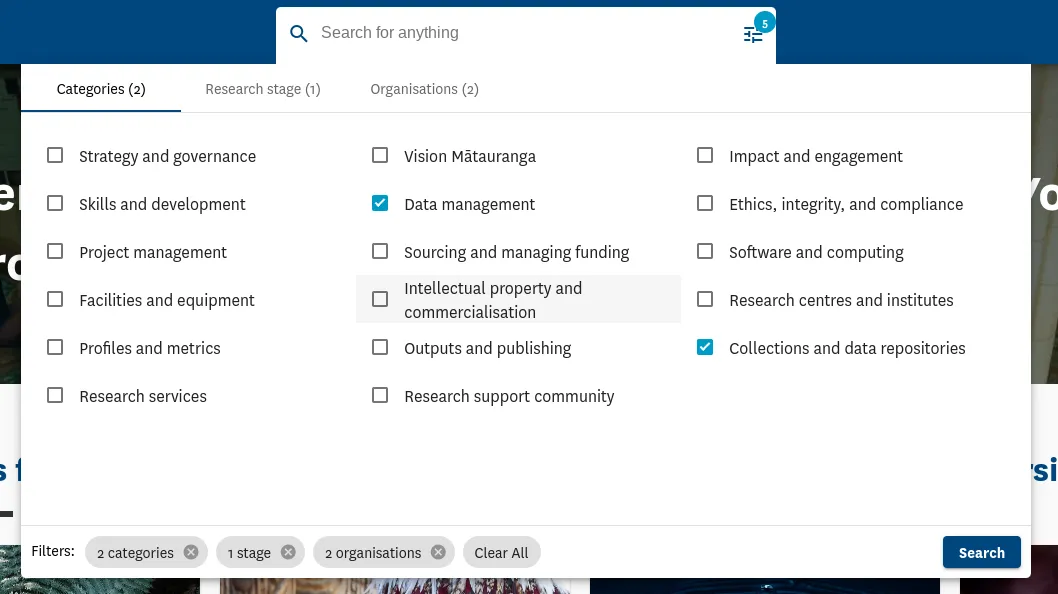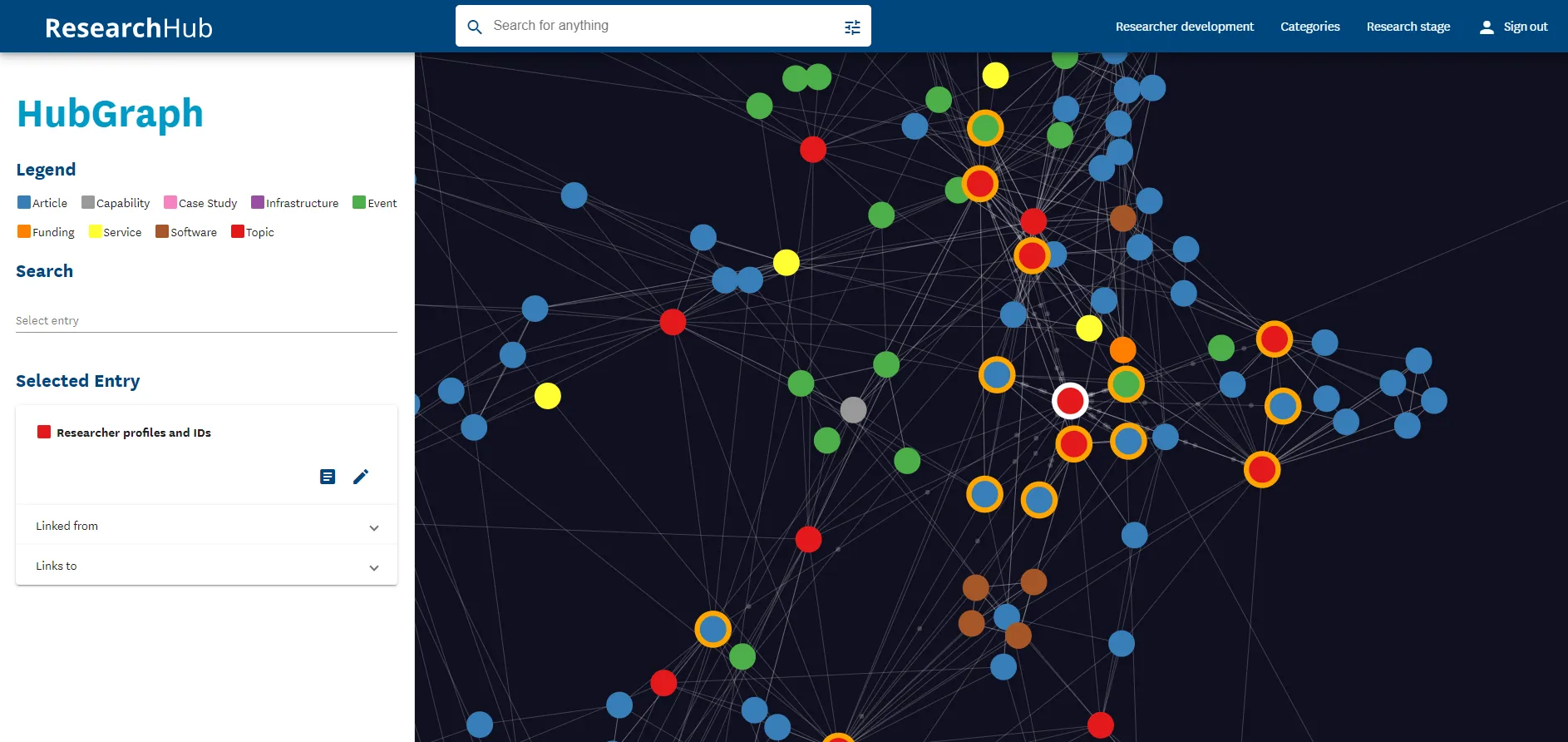
Research Hub & Hub Graph
A content focussed website for researchers
During my time working for the Centre for eResearch at the University of Auckland I contributed significantly to the ResearchHub project. The project aimed to develop a modern content platform for researchers at the university, that would speed up access to information critical for the researchers success. For a period of about a year I was the ResearchHub’s main front-end developer and I helped the team with releasing and improving version 2.0.
Besides general refactoring and elimination of technological debt, I worked on a few major features which are explained in more detail in this article.
Search
The ResearchHub’s content model allows for grouping of articles in topics and subtopics. While this enables some level of discoverability, search is always an important tool to enable content access. When I joined the ResearchHub team basic search functionality was available, however, it was limited to the landing page and lacked filtering capabilities.
I implemented a redesign, which enabled global search from the navigation bar and standardised search URLs such they could be shared with other people. To improve the filter UX I added a mega menu which allowed for quick filtering by the many categories and sections the content model provided.

I made further contributions to the search results page, for instance, I updated the result loading to use
infinite scrolling instead of pagination using RXJS and IntersectionObserver.
Data Analysis
Contentful CMS allows content writers to create links between different pages. On the ResearchHub this is used to suggest other topics of interests to the visitor. This can result in a complex mesh like content structure representable by a graph that can be hard to keep track of. Another problem content centred pages commonly face is how to ensure that content is as fresh as possible. This problem isn’t easily solvable with technology, as humans are important for writing and updating content pages. However, a technical solution can assist content writers and managers to pinpoint areas that require attention.
Content Reporting
To tackle these problems, I devised a reporting system that fetches every content page from Contentful and generates CSV files collecting information about the freshness of the content and its degree of connectivity. I achieved this using an AWS Lambda serverless function which periodically fetched content from Contentful using the GraphQL API and then uploaded the results to AWS S3 and Google Sheets. To make it easier for content managers to analyse and understand the data, a Google data studio dashboard was also created.
HubGraph
The second function of the reporting lambda was to aid with visualising the graph structure of the content. I used the force-graph library to visualise the data created by the reporting feature. This library assists in creating a force-directed graph which is a very common way of visualising arbitrary graph structures.

The graph is fully interactive and displays information about an articles connections and links to its Contentful pages for easy access to editing.